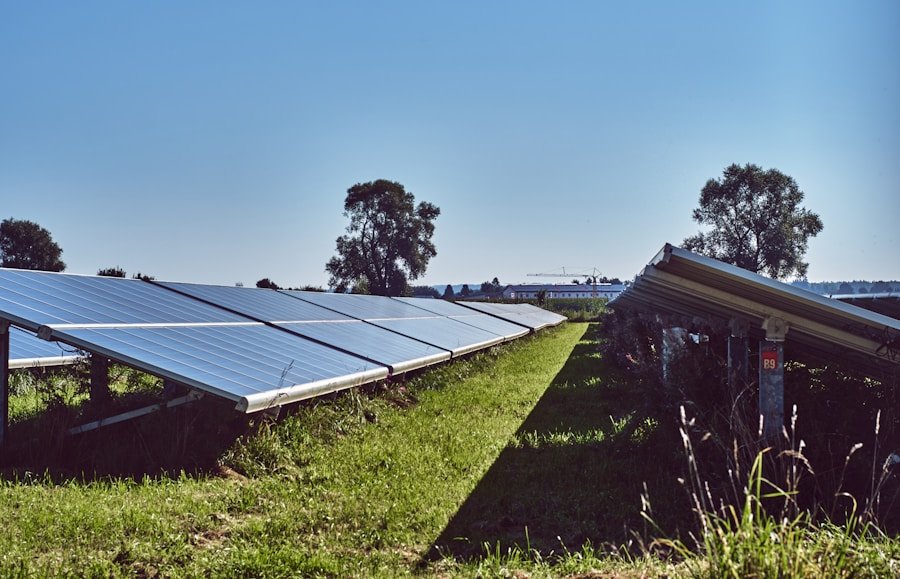Energy grants and rebates are financial incentives offered by governments, utility companies, and other organizations to encourage individuals and businesses to invest in energy-efficient technologies and practices. These incentives are designed to help offset the initial cost of implementing energy-saving measures, such as installing solar panels, upgrading to energy-efficient appliances, or improving insulation. By providing financial assistance, energy grants and rebates aim to make it more affordable for people to adopt sustainable energy solutions, reduce their carbon footprint, and lower their energy bills.
Energy grants are typically awarded as a one-time sum of money to help cover the cost of purchasing and installing energy-efficient equipment or making energy-saving improvements to a property. On the other hand, energy rebates are often provided as a partial refund of the purchase price of an energy-efficient product or service, such as a solar water heater or home insulation. Both grants and rebates can significantly reduce the upfront expenses associated with energy efficiency projects, making it easier for individuals and businesses to make environmentally friendly choices.
How to Qualify for Energy Grants and Rebates
Qualifying for energy grants and rebates typically depends on a variety of factors, including the type of project or improvement being undertaken, the location of the property, and the specific eligibility criteria set by the grant or rebate program. In general, most energy grant and rebate programs require applicants to meet certain requirements related to the type of technology being installed, the energy efficiency standards being met, and the qualifications of the installer or contractor.
To qualify for energy grants and rebates, individuals and businesses may need to demonstrate that they are using approved energy-efficient products or services, working with certified professionals, and adhering to specific installation guidelines. Additionally, some programs may have income restrictions or other eligibility criteria that applicants must meet in order to receive financial assistance. It’s important for potential applicants to carefully review the requirements of each grant or rebate program to ensure that they meet all necessary qualifications before applying.
Types of Energy Grants and Rebates Available
There are a wide variety of energy grants and rebates available to help individuals and businesses invest in energy-efficient technologies and practices. Some common types of grants and rebates include those for solar panel installations, energy-efficient appliance upgrades, home insulation improvements, and heating and cooling system upgrades. Additionally, there are often grants and rebates available for commercial and industrial energy efficiency projects, such as lighting retrofits, HVAC system upgrades, and building envelope improvements.
In addition to government-sponsored programs, many utility companies offer their own energy grants and rebates to encourage customers to reduce their energy consumption and invest in sustainable technologies. These incentives may include cash rebates for purchasing energy-efficient appliances, discounts on energy audits or home energy assessments, and financial incentives for participating in demand response programs. By taking advantage of these various grant and rebate opportunities, individuals and businesses can make significant strides towards reducing their energy usage and lowering their environmental impact.
How to Apply for Energy Grants and Rebates
Applying for energy grants and rebates typically involves completing an application form and providing documentation to support the eligibility of the project or improvement being undertaken. The specific application process can vary depending on the grant or rebate program, but in general, applicants will need to provide information about the type of technology being installed, the expected energy savings or environmental benefits, and the qualifications of the installer or contractor.
In some cases, applicants may also need to submit proof of purchase or installation, such as receipts, invoices, or product labels, in order to receive a rebate or grant payment. It’s important for individuals and businesses to carefully review the application requirements for each grant or rebate program to ensure that they provide all necessary documentation and information. Additionally, applicants should be aware of any deadlines or funding limitations associated with the program in order to submit their applications in a timely manner.
Maximizing Energy Grants and Rebates for Your Home
To maximize the benefits of energy grants and rebates for your home, it’s important to carefully consider which energy-efficient improvements will provide the greatest return on investment in terms of energy savings and financial incentives. For example, installing solar panels or upgrading to a high-efficiency heating and cooling system may offer significant long-term savings on energy bills while also qualifying for generous grants or rebates. Additionally, making multiple energy-saving improvements at once can help homeowners take advantage of combined incentives and maximize their overall impact on energy efficiency.
In addition to choosing the right projects, homeowners can also maximize their energy grants and rebates by working with qualified professionals who can ensure that installations meet all necessary requirements and standards. By hiring certified contractors or installers, homeowners can avoid potential issues with eligibility or compliance that could affect their ability to receive financial incentives. Finally, homeowners should be proactive in researching available grant and rebate programs in their area to take advantage of all potential opportunities for financial assistance.
Tips for Saving Energy and Qualifying for Grants and Rebates
In addition to applying for energy grants and rebates, there are many other ways that individuals and businesses can save energy and reduce their environmental impact while also qualifying for financial incentives. Simple steps such as upgrading to LED lighting, using programmable thermostats, and sealing air leaks can all contribute to lower energy bills and increased eligibility for grants and rebates. Additionally, participating in utility-sponsored energy efficiency programs, such as demand response initiatives or time-of-use pricing plans, can help individuals save money on their energy bills while also potentially qualifying for additional incentives.
Another important consideration for saving energy and qualifying for grants and rebates is regular maintenance of energy-efficient equipment and systems. By keeping appliances, HVAC systems, and other energy-saving technologies in good working order, individuals can ensure that they continue to operate at peak efficiency and deliver maximum cost savings. Finally, individuals should be mindful of their overall energy usage habits and look for opportunities to reduce consumption through simple actions such as turning off lights when not in use, unplugging electronics when not in use, and using energy-efficient settings on appliances.
Frequently Asked Questions about Energy Grants and Rebates
1. What types of projects are eligible for energy grants and rebates?
A wide range of projects may be eligible for energy grants and rebates, including solar panel installations, home insulation improvements, heating and cooling system upgrades, energy-efficient appliance purchases, lighting retrofits, and more.
2. Are there income restrictions for qualifying for energy grants and rebates?
Some grant and rebate programs may have income restrictions or other eligibility criteria that applicants must meet in order to receive financial assistance. It’s important to carefully review the requirements of each program before applying.
3. How can I find out about available energy grants and rebates in my area?
Individuals can typically find information about available energy grants and rebates through government websites, utility company websites, or by contacting local energy efficiency organizations or contractors.
4. What is the difference between an energy grant and an energy rebate?
Energy grants are typically awarded as a one-time sum of money to help cover the cost of purchasing and installing energy-efficient equipment or making energy-saving improvements to a property. Energy rebates are often provided as a partial refund of the purchase price of an energy-efficient product or service.
5. How long does it take to receive payment for an approved grant or rebate application?
The timeline for receiving payment for an approved grant or rebate application can vary depending on the specific program. Applicants should review the terms of each program to understand when they can expect to receive payment after approval.




0 Comments